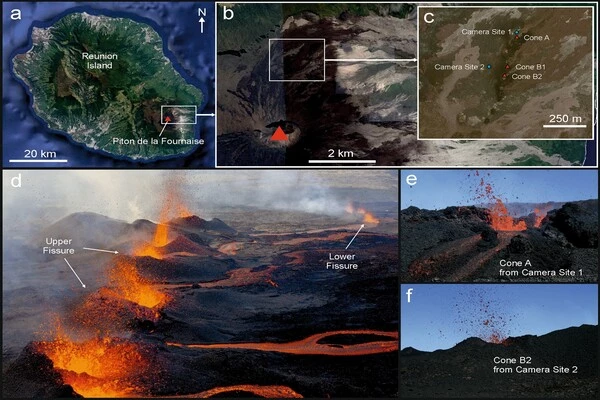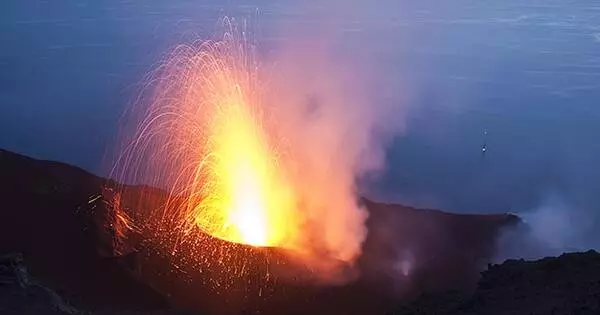The precise location of magma within a volcano can improve volcanic eruption forecasts significantly. The distribution and movement of magma beneath the Earth’s surface influence when and how volcanic eruptions occur. Scientists can better understand the dynamics of volcanic systems and make more precise predictions about future eruptions by accurately identifying the locations of magma chambers.
Cornell University researchers have discovered precise, microscopic clues to the location of magma storage, allowing them to better assess the risk of volcanic eruptions.
Scientists have used satellite imagery, earthquake data, and GPS in recent years to search for ground deformation near active volcanoes, but these techniques can be inaccurate in determining magma storage depth. Scientists can pinpoint the location of magma to within a hundred meters by locating microscopic, carbon dioxide-rich fluids encased in cooled volcanic crystals.
A fundamental question is where magma is stored in Earth’s crust and mantle. That location matters because you can gauge the risk of an eruption by pinpointing the specific location of magma, instead of other signals like hydrothermal system of a volcano.
Esteban Gazel
“A fundamental question is where magma is stored in Earth’s crust and mantle,” said Esteban Gazel, professor of engineering and lead author of the study, published in Science Advances. “That location matters because you can gauge the risk of an eruption by pinpointing the specific location of magma, instead of other signals like a hydrothermal system of a volcano.”
Gazel notes that speed and precision are essential. “We’re demonstrating the enormous potential of this improved technique in terms of its rapidity and unprecedented accuracy,” he said. “We can produce data within days of the samples arriving from a site, which provides better, near real-time results.”

In volcanic events, magma reaches the Earth’s surface and erupts as lava, which can be explosive depending on how much gas it contains. When deposited as part of the eruption’s fallout, fragmented fine-grained material known as tephra can be collected and analyzed.
Gazel and doctoral student Kyle Dayton discovered how to precisely indicate depth using inclusions of carbon dioxide-rich fluids trapped within olivine crystals, as the carbon dioxide density of these inclusions is controlled by pressure.
These fluids can be measured quickly with an instrument to determine how far down the magma was stored and the depth of the scorching reservoir in kilometers.
Improved eruption forecasts not only help with planning and mitigating potential risks for nearby populations, but they also contribute to better decision-making about evacuations, aviation safety, and critical infrastructure management.
















